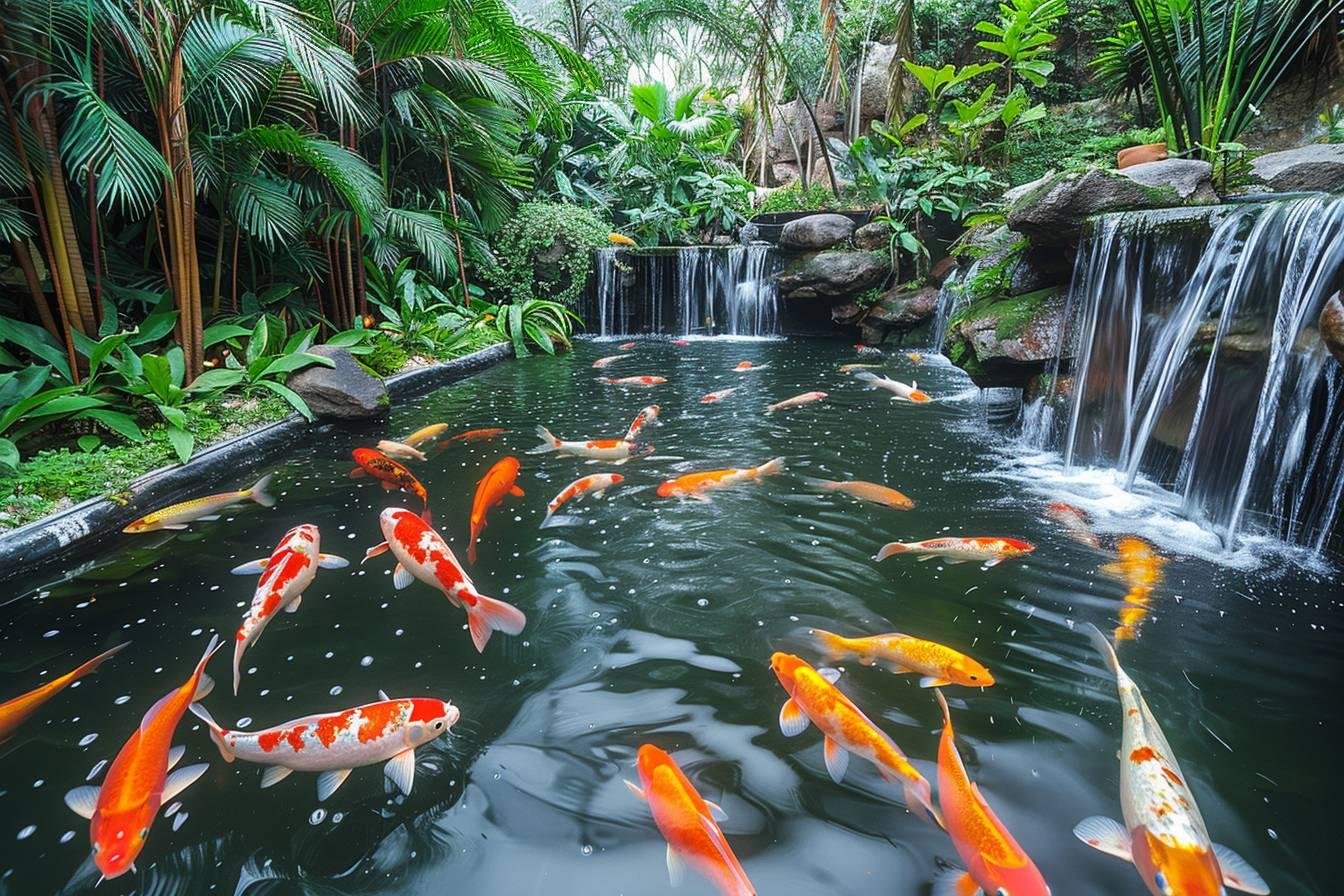Koi carp are Asian ornamental fish.They are particularly prized in Japan, where they symbolise fortune, courage, perseverance and love. These magnificent creatures, the result of long selections from the common carp called Cyprinus rubrofuscus, belong to the Cyprinidae family. Their variety and spectacular colours, ranging from red, orange and white to black, cream and gold, dazzle all fish lovers.
The life expectancy of a koi carp
The average life expectancy of a Koi carp is 25 to 35 years. in a well-maintained pond. However, some specimens can reach an advanced age of 50 to 70 years, and even over 200 years in exceptional historical cases. Their longevity is influenced by a number of factors, including genetics, water quality and diet.
Here is a table summarising the factors influencing the lifespan of koi carp:
| Factors | Impact on longevity |
|---|---|
| Water quality | A clean, well-filtered habitat improves the health of Koi carp. |
| Power supply | A varied, high-quality diet will prolong the life of your fish. |
| Espace | A spacious pond reduces stress and encourages better growth. |
| Temperature | Stable temperatures of between 2 and 30°C are ideal. |
Where does the koi carp come from?
Koi carp, often found in China and Japan, have a rich and fascinating history. Originally from China, they were introduced to Japan, where they were quickly bred for their ornamental qualities. These magnificent fish symbolise various cultural values, and their impressive varieties such as Tancho (white with a red circle on the head), Kohaku (white with red spots), Taisho-Sanke (white with red and black spots) and Showa-Sanshoku (black with red and white spots) are the result of years of meticulous selection.
Some of these varieties, prized for their distinctive patterns and colours, have become must-haves for collectors and aquatic gardeners. They reach an average length of 80 cm when fully grown, although height can vary between 50 cm and 120 cm depending on various factors, and weigh between 5 and 10 kg.
How do you create a koi pond?
Providing a suitable pond for koi carp is essential to their well-being and longevity. These fish require a large outdoor pool with a minimum depth of 1.50 metres, containing at least 1 m³ of water per fish. A spacious, well-maintained environment prevents overpopulation and maintains water quality, crucial factors in ensuring their survival. As a pet shop floor manager, I often joked with customers that the koi carp had more space than I did at home!
Equipment required
To maintain your water quality, make sure you invest in water treatment systems. filtrationUV-C filters, pumps and, if necessary, heating. This essential equipment contributes to a healthy environment for the fish.
Pool maintenance
Regular maintenance is crucial:
- Remove dead leaves
- Cleaning filters
- Testing water quality
- Adjust parameters if necessary
These practices ensure clean water and a healthy home, preventing disease and other health problems.
Co-existence with other fish
Koi, known for their peaceful nature, coexist harmoniously with other fish, particularly goldfish. However, make sure that the basin is large enough to avoid competition for food and space.

How should you feed your koi carp?
Koi need a varied diet to meet their specific nutritional requirements. They are omnivores with a herbivorous tendency, so a balanced diet including specially formulated pellets, prawns, bloodworms and unsalted cooked vegetables is recommended. As a young department manager, I remember sharing a few amusing anecdotes with customers about how koi carp sometimes eat out of their owner's hand!
Adapting food to the seasons
The diet should vary according to the season:
- In spring and summer, they can be fed more frequently.
- In autumn, their appetite decreases and their ration needs to be adapted accordingly.
- In winter, when temperatures drop, it is advisable to limit the feed, or even stop it completely if the water falls below 10°C.
A diet adapted to the seasons guarantees their health and longevity.
Granules
Pellets make up the bulk of their diet. They must contain at least 25% of protein to ensure optimum growth and good health. Make sure you choose high-quality pellets that are adapted to the needs of your koi.
How much does a koi carp cost?
The price of a koi carp depends on a number of criteria, including age, variety, colour and sex. Here's a rough guide:
- Basic koi carp: from €20 to €50
- Standard varieties: between €50 and €500
- Rare and exceptional specimens: up to €4,000
- Collector's koi: can fetch up to €1.5 million in some rare and historic cases
These price differences reflect the specificity and rarity of the varieties, as well as the investment required to maintain them.
In conclusion, if you want to enjoy Koi and see them reach their maximum life expectancy, investing in a good habitat and quality food is essential. And if you have any amusing anecdotes or questions about koi carp, please don't hesitate to share.
After all, our aquatic friends deserve the best!
